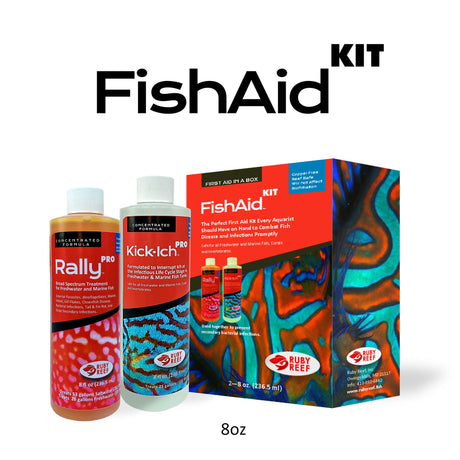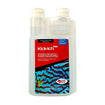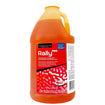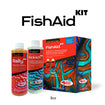- No products in the cart.
This Guide Covers All Aspects Of Treatment For Saltwater Fish
19
Sep
Ich, or Ichthyophthirius multifiliis, commonly known as "white spot disease," is one of the most prevalent and destructive diseases in saltwater aquariums. It's caused by a ciliated protozoan parasite that attacks both freshwater and ich treatment for saltwater fish, leading to significant distress and high mortality rates if left untreated. This blog post delves into effective strategies and treatments to manage ich in saltwater environments, ensuring the health and longevity of your aquatic pets.
Understanding Ich in Saltwater Fish
Ich manifests as white, salt-like granules on the fish’s skin, gills, and fins. Infected fish may also exhibit signs of irritation such as scratching against objects, lethargy, and decreased appetite. The life cycle of the ich parasite includes several stages, but it is most vulnerable to treatment during its free-swimming stage.
Diagnosis of Ich
The first step in addressing ich is confirming its presence through observation of symptoms and, in some cases, microscopic examination of skin scrapes. Early detection is crucial for effective treatment and can prevent the spread of the parasite to other fish in the tank.
Treatment Options for Saltwater Ich
Copper-Based Treatments:
Copper sulfate and chelated copper are commonly used treatments for ich in saltwater aquariums. These compounds work by disrupting the parasite's metabolism. It is essential to maintain the copper concentration at a therapeutic level for at least two weeks to cover the entire life cycle of the parasite. Accurate testing with copper test kits is crucial to ensure the levels are within a safe range.
Hyposalinity Therapy (Osmotic Shock):
This method involves gradually reducing the salinity of the aquarium water to a specific gravity of 1.009 for a period of 2-3 weeks. This treatment is effective as the ich parasite cannot tolerate low salt levels, but it must be done cautiously to avoid stressing the fish.
Tank Transfer Method:
This involves moving the fish to a new, clean tank every 24-48 hours over a period of several days. Each transfer leaves behind the majority of the parasites, which are unable to survive without a host. This method can be labor-intensive but avoids the use of harsh chemicals.
Heat Treatment:
Increasing the water temperature to speed up the life cycle of the ich parasite can be effective. The ideal temperature range is between 78-82°F (26-28°C). This method should be used in conjunction with other treatments to ensure all stages of the parasite are eradicated.
Supporting Treatments
UV Sterilizers and Diatom Filters:
These can be used to remove the free-swimming stages of the ich parasite from the water column.
Vitamin and Nutrient Supplementation:
Boosting the immune system of the fish through fortified foods and vitamin supplements can help them resist infections and recover more quickly.
Environmental Management
Maintaining optimal water quality is crucial in preventing the outbreak of ich. Regular water changes, adequate filtration, and monitoring of water parameters (ammonia, nitrite, nitrate, pH, and salinity) are essential. Stress reduction through proper handling, compatible tank mates, and stable environmental conditions also plays a significant role in disease prevention.
Quarantine New Arrivals
Always quarantine new fish for at least two to four weeks to monitor for signs of ich or other diseases. This precautionary measure can prevent the introduction of pathogens into your established aquarium.
Conclusion
Managing ich in saltwater fish requires a multifaceted approach involving direct treatments, environmental adjustments, and preventative practices. With the right knowledge and tools, aquarium enthusiasts can effectively combat this disease, promoting a healthy and vibrant marine environment. Early detection, coupled with prompt and appropriate treatment, remains the best strategy to ensure the well-being of your saltwater fish.






